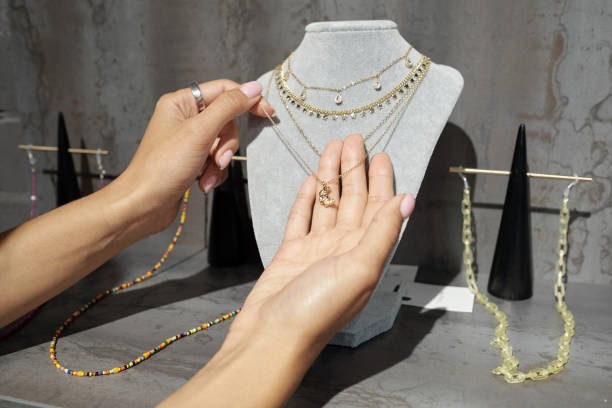When you own expensive jewelry, protecting it against loss, damage, or theft becomes essential. Many people assume their homeowners insurance offers full protection. However, this belief often leads to confusion during claims. Comparing jewelry insurance vs. homeowners insurance helps you understand the differences and choose the right coverage. Jewelry insurance, designed specifically for high-value items, offers distinct benefits and limitations compared to a standard homeowners policy.
This guide will help you explore both types of coverage, their differences, benefits, and how to make an informed choice. Whether you’re a collector, investor, or simply own sentimental pieces, this comparison can save you from future regret.
What Does Homeowners Insurance Cover for Jewelry?
Homeowners insurance typically includes personal property coverage, but it comes with limits. In many standard policies, jewelry is covered up to a specific dollar amount, often between $1,000 and $2,500 for loss due to theft. This amount might be too low if you own fine jewelry, custom designs, or investment-grade pieces.
This limited coverage only applies under certain conditions:
- Losses must be caused by covered perils like fire or theft.
- Damage or mysterious disappearance is often excluded.
- Items must be stored in the insured location unless additional coverage is added.
To extend protection, some homeowners choose to schedule their jewelry through a rider or floater. However, this process usually requires detailed appraisals and may still leave gaps.
What Is Jewelry Insurance and How Is It Different?
Jewelry insurance is a separate policy specifically tailored to protect valuable jewelry. These policies offer broader protection than homeowners insurance. Coverage can include accidental loss, damage, theft, and even mysterious disappearance, which homeowners policies often exclude.
Key features of jewelry insurance:
- Coverage applies worldwide, not just at your home.
- Claims usually don’t impact your homeowners insurance premiums.
- Repairs or replacements are based on appraised value, ensuring accuracy.
- Policies can be customized for each piece.
Unlike generic property coverage, jewelry insurance providers understand the unique value of individual items. That means claim processes are often faster, more accurate, and handled by specialists.
Comparing Coverage Limits and Claim Process
Homeowners Insurance
- Typically capped at $1,000–$2,500 for jewelry loss.
- Higher limits may require additional riders.
- Claims can affect your entire policy, including other property.
- Reimbursements may reflect depreciated value, not current replacement cost.
Jewelry Insurance
- Covers items based on full appraisal or market replacement cost.
- Protects against more causes of loss.
- Claims handled separately from your home insurance.
- Less paperwork and faster processing, often with repair or replacement services included.
When comparing jewelry insurance vs. homeowners insurance, the difference in claims and reimbursement quality becomes clear. Jewelry-specific policies offer peace of mind when dealing with loss or theft.
How Premiums and Costs Differ
The cost of jewelry insurance depends on several factors:
- Value of the item
- Location and risk level
- Type of coverage and deductible chosen
Generally, jewelry insurance costs between 1% and 2% of the item’s value per year. For example, a $5,000 ring may cost $50–$100 annually to insure.
On the other hand, homeowners insurance adds cost when riders are used. These scheduled personal property endorsements can be expensive if you have many items. Worse, a claim for a single piece could raise your overall homeowners premium.
Jewelry insurance offers better value for individuals with multiple or high-value pieces. It also allows easier budgeting and avoids unwanted rate hikes on your home policy.
Worldwide Coverage and Travel Protection
Homeowners insurance often limits jewelry coverage to your property location. If your item is lost while traveling, the policy might not cover it.
Jewelry insurance offers global protection. Whether you lose a necklace during a vacation or damage a ring abroad, your item is covered. This makes jewelry insurance a practical choice for frequent travelers or those who wear their pieces outside the home.
Travel-related claims are more common than many expect. That’s why choosing a policy with global coverage is a key consideration.
Importance of Appraisals and Documentation
To file a successful claim under either type of insurance, proper documentation is necessary. This includes:
- Receipts
- Professional appraisals
- Detailed photos
Jewelry insurance providers often require updated appraisals every few years. Homeowners insurance may only ask for documentation when you add a rider. While this step adds effort, it ensures accurate valuation in case of loss.
Keeping updated records also helps during estate planning, resale, or donation. It’s smart not only for insurance but also for long-term financial planning.
Which Type of Insurance Should You Choose?
If your jewelry is low in value or sentimental only, homeowners insurance with a small rider may be enough. But for high-value or irreplaceable items, jewelry insurance provides broader and more reliable protection.
You should consider standalone jewelry insurance if:
- You own custom or designer pieces.
- You travel often with your jewelry.
- Your homeowners policy has low coverage limits.
- You want fast, specialized claims handling.
- You plan to insure more than one item.
You may stay with homeowners insurance if:
- You rarely wear the jewelry.
- It stays in a safe and rarely moves.
- Its value is below your policy’s coverage cap.
Always evaluate your coverage annually. Changes in market value, personal circumstances, or jewelry use can impact the level of insurance you need.
Common Misconceptions to Avoid
Many policyholders assume that:
- All personal property is covered equally.
- Jewelry lost while traveling is always insured.
- Claims won’t affect home policy rates.
- Market value is automatically used for reimbursement.
These assumptions often lead to underinsurance or denied claims. Understanding the fine print and seeking specialized advice can protect your investment and reduce stress later.
Real-World Scenarios That Show the Difference
Example 1: Lost Wedding Ring While Traveling
A couple loses a wedding ring while on vacation. Homeowners insurance does not cover losses outside the home unless a rider is added. Jewelry insurance would cover it with little delay.
Example 2: Fire Damage to Entire Property
A fire destroys a home and all its contents. Homeowners insurance pays for property loss, but jewelry coverage may be limited to the standard cap. Jewelry insurance provides a separate claim process with higher coverage.
Example 3: Theft from a Gym Locker
An insured necklace is stolen at a gym. Homeowners insurance might deny the claim due to location or conditions. Jewelry insurance covers theft, even in public spaces.
These cases show how jewelry insurance works better for real-life risks.
Final Thoughts on Making the Right Choice
Jewelry holds more than just monetary value. Whether it’s an heirloom or a new purchase, it deserves the right protection. Comparing jewelry insurance vs. homeowners insurance helps you see the gaps in your current policy and decide if you need more specialized coverage.
Assess the true value of your collection, how often you wear it, and the risks you face. Review your homeowners policy and consider if it’s giving enough protection. For most people with fine or expensive jewelry, standalone jewelry insurance offers more peace of mind and practical value.
A few extra steps now can help you avoid regret later. Make a smart choice that protects both the financial and emotional worth of your most cherished items.































